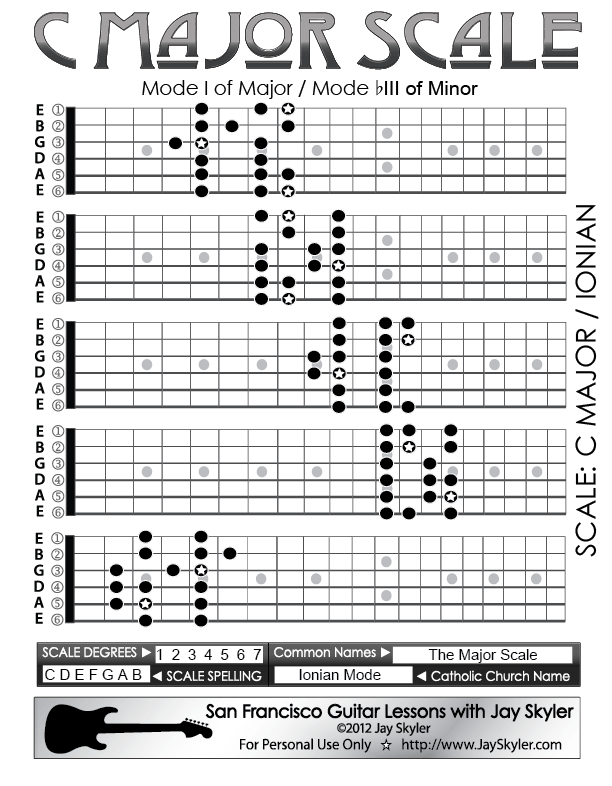
Major Scale Guitar Fretboard Patterns Chart, Key of C by Jay Skyler
The major scale has a happy, upbeat quality to it. The intervals of the major scale are as follows: 1 W 2 W 3 H 4 W 5 W 6 W 7 H 1. W = whole step (or 2 fret interval) H = half step (or 1 fret interval) The above is meant to show you the intervals of the major scale. Since the root is on the E note (open low E string), this is an E major scale.
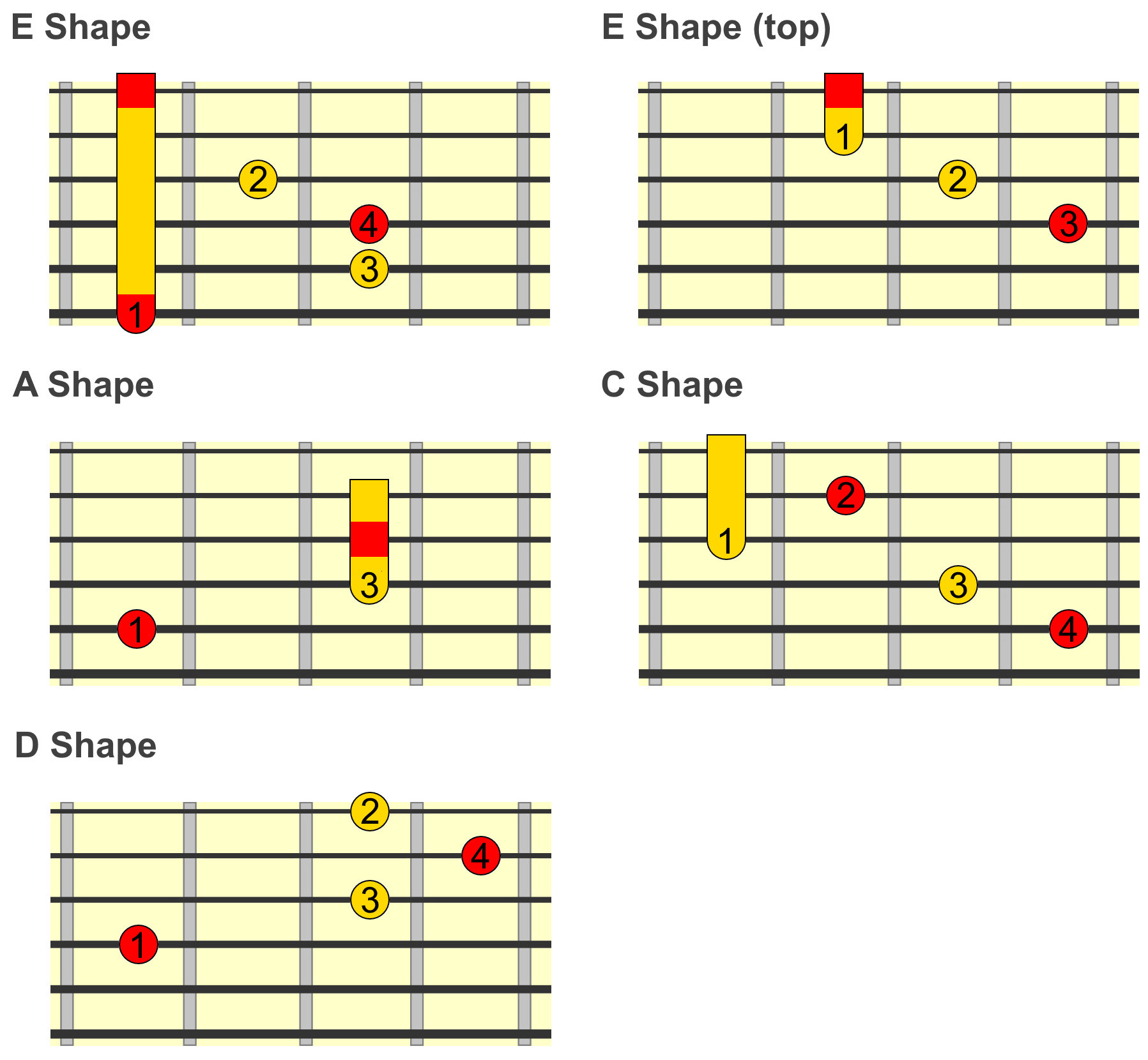
Major 7th Chords on Guitar Start Here
You can do this with every degree of the Major Scale to create 7 modes. Each have a characteristic sound because of the shifted intervals. Let's compare the Ionian Mode & Lydian Mode. Most of the intervals are the same, but the Lydian Mode has a ♯4. If you play the Lydian Mode you'll notice a difference in character from the normal Major.

The Major Scale The Most Important Guitar Scale to Learn
The Major Scale. The major scale consists of 7 notes and an octave note (the root note played an octave higher/lower). If we take a look at the G major scale,. However, this isn't the only system that's used to create scale shapes on the fretboard. Another popular method is the 3 notes per string method. I don't endorse either as being.
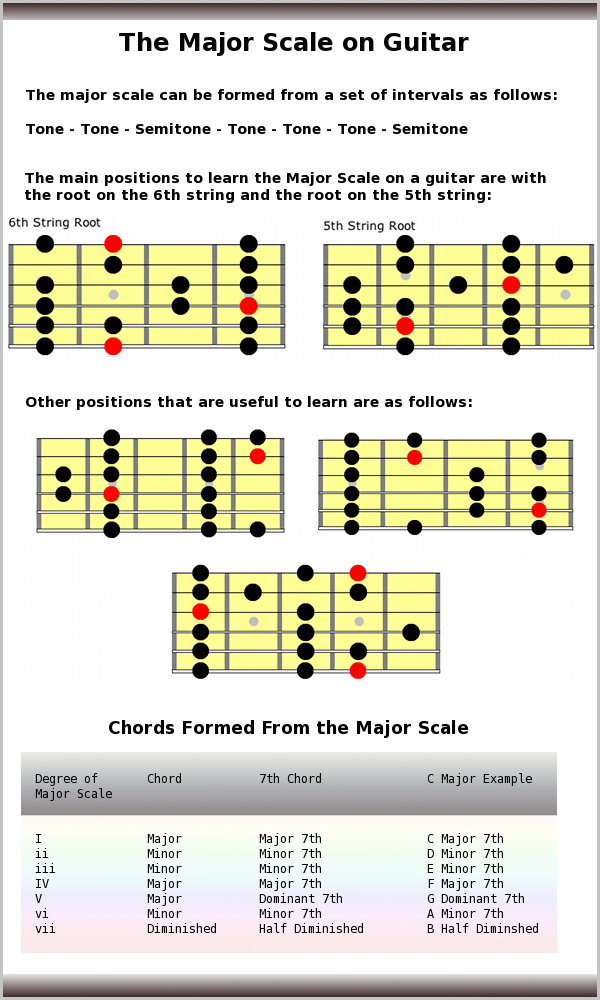
Major Scale Guitar Scales
🤹♂️ An easy reference for the scales in the 7 modes of the major scale: Ionian (major), Dorian, Phrygian, Lydian, Mixolydian, Aeolian (minor) and Locrian.You'll notice that they are organized by fifths, as with the circle of fifths, to help visualize the relationship between keys. You might like this chart that illustrates the mode relationships to the major scale.

The Major Scale Anyone Can Play Guitar
5th String with position change. 5th String standard. 4 notes per string (3 octaves) 4th String, 1 and 2 octaves. Video Tutorial Explaining and Demonstrating These 7 shapes. 1. Open Position. This first position to play and practise your major scales is perhaps technically not a shape but more of a position.
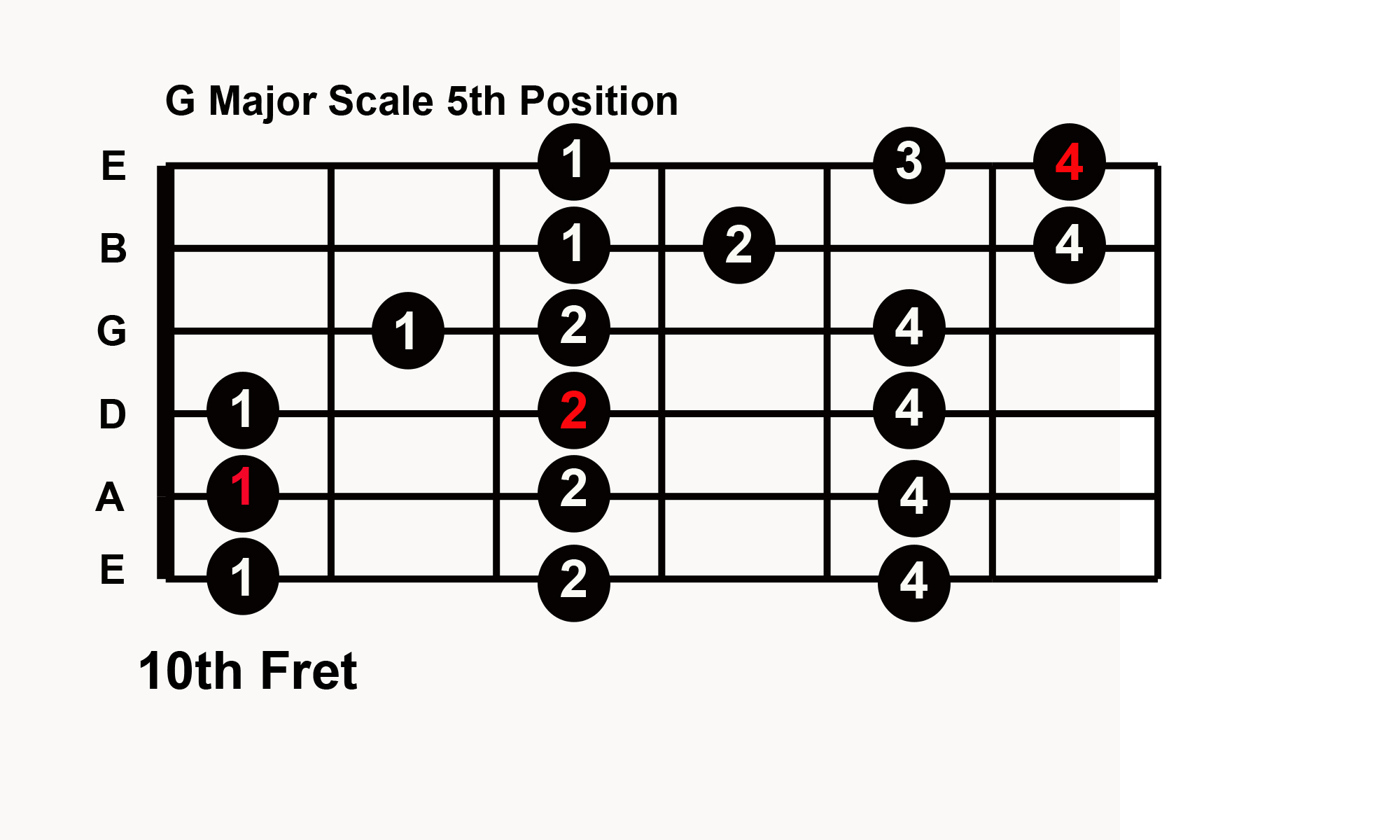
Guitar Solo Without Learning Notes with 5 Major Scale Patterns
G is 5. A is 6. B is 7. C is 8 (one octave above) The notes of the scale have been identified by their scale degree, denoting each note's position in the scale and its distance from the tonic. For example, E is the 3rd degree of the C major scale, two whole steps above the tonic. C MAJOR SCALE DEGREES.
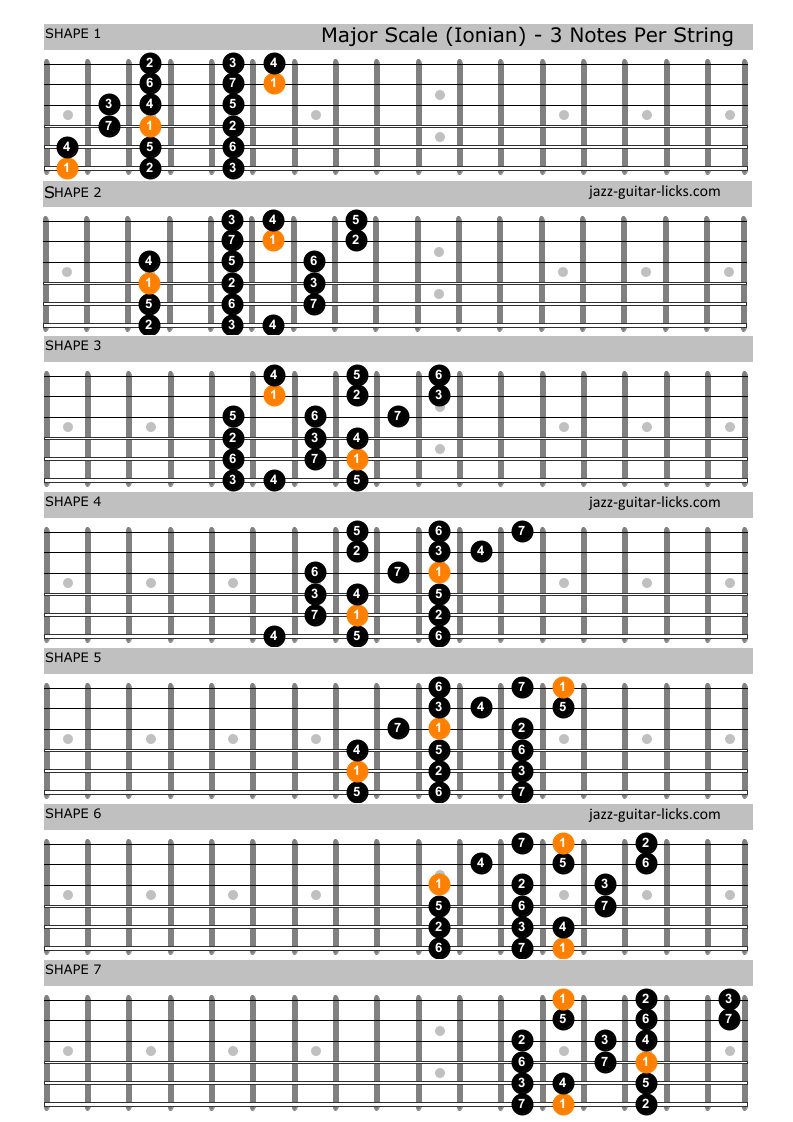
Modes Of The Major Scale Guitar Charts Cheat Sheets lupon.gov.ph
Download Pdf. Okay here are the 7 modes. The modes are based off major keys. What I will be showing you today is the 7 modes typed out starting from Ionian and ending on Locrian in the key of A MAJ. Hence why we are starting on the 5th fret for the first shape. Also if you were to adjust everything up by one fret you would now be in the key of.
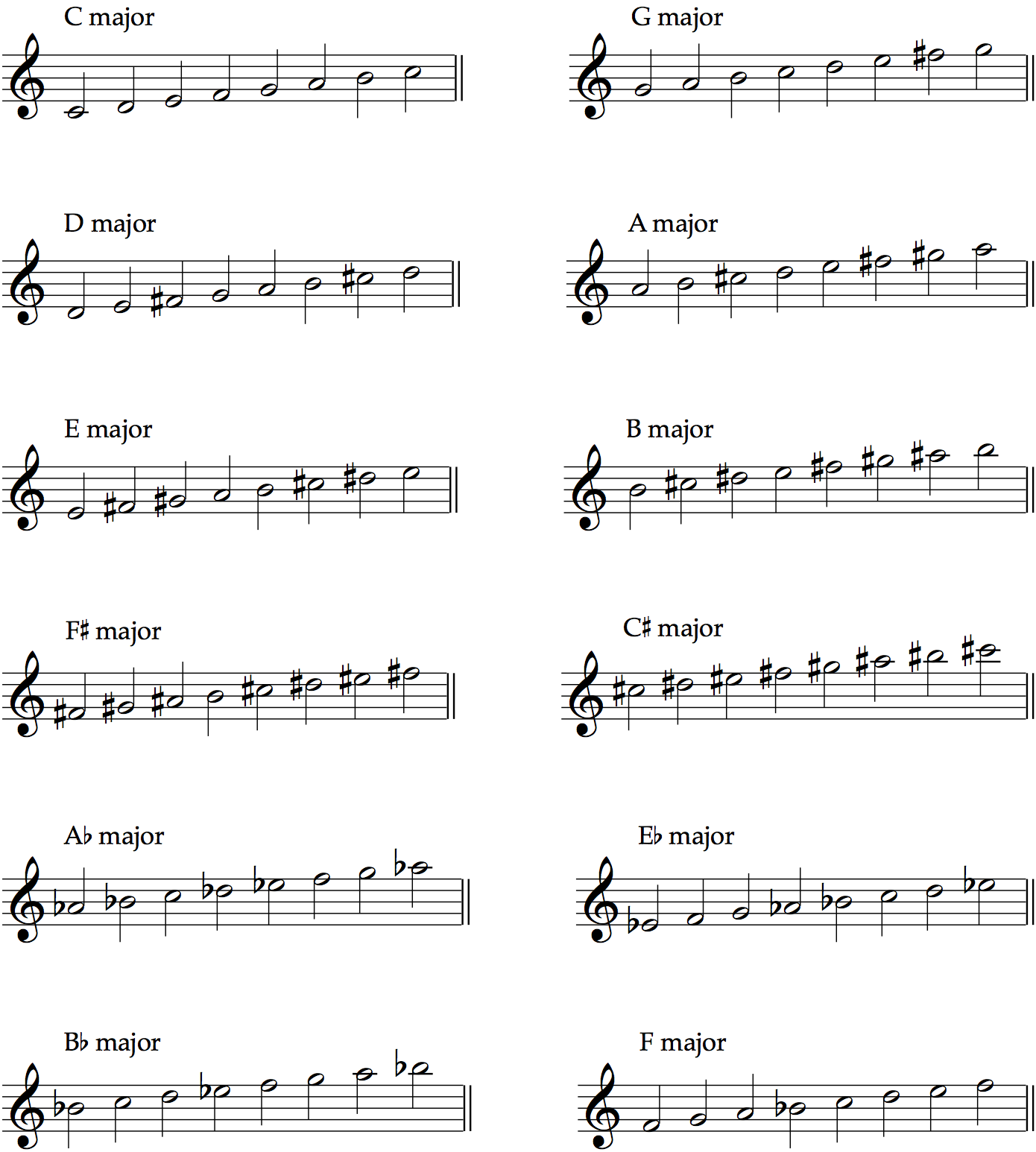
Major Scale Theory
Shapes of the Major Scale and Movable Scale Patterns. One of the best things about playing the guitar is the ability to move shapes (e.g. barre chords, power chords, scales) and patterns around the neck with ease. Movable shapes and scale patterns can allow you to play in any key by applying the same fingering pattern to a different root note.

7 Essential Scale Shapes For Lead Guitar
Here is an overview of the Major scale in the key of C, using the 7 Positions/Berklee System. This is a variation of the William Leavitt/Berklee system from Modern Method for Guitar, as it was taught to me. Practicing Scales and finding useful exercises. If you want to learn scales then you need to practice them in the right way.

The 7 modes of the major scale Guitar lessons, Learn guitar, Music theory guitar
Major 7 Guitar Arpeggio Shapes - CAGED Charts. The charts below show how to play major 7 arpeggios all over the entire fretboard by using the CAGED method. The first diagram cover the whole guitar neck, the tonic (1) is represented in orange.. The five guitar diagrams below show the scales that contains a major 7 arpeggio. These scales are.

17 Best images about guitar scales on Pinterest Guitar chords, Diatonic scale and Guitar lessons
Modes can be derived from any scale, including the major scale, the three minor scales, and pentatonic scales. This lesson focuses on the modes of the major scale. Modes can be derived from the major scale in two different ways: by starting and ending on a specific scale degree, and using formulas to alter the major scale.

The 5 Major Scale Shapes You Need To Know On Guitar JG Music Lessons
Hi, Please take the time to listen to the instructions for learning the accelerated way to learn and memorise the 7 Major scale positions. Or jump to 6 mins.
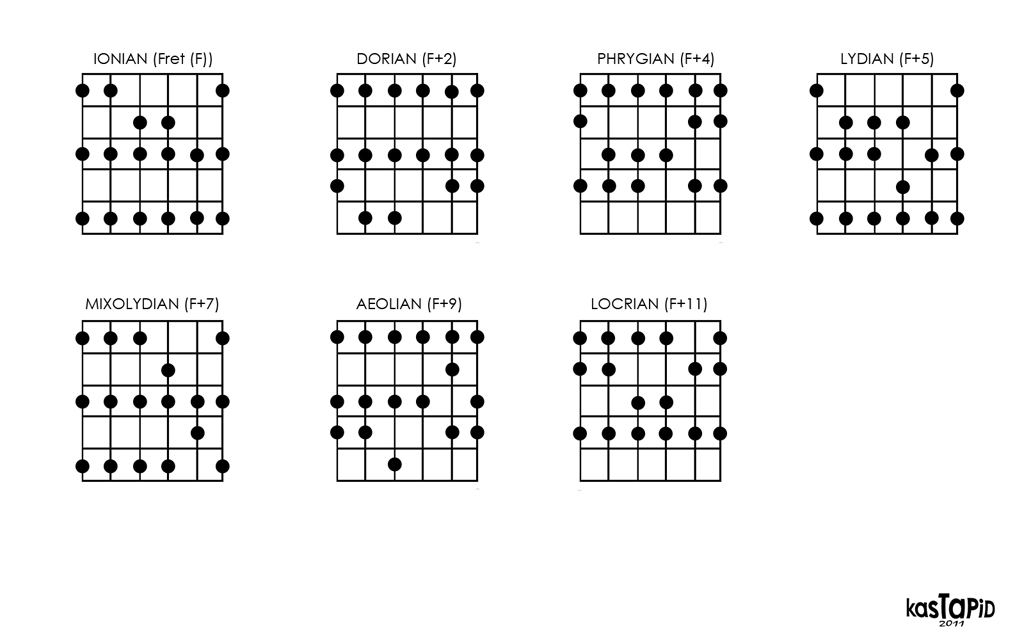
kasTaPiD's blog page Major scale (Ionian mode) patterns Tonics, 3rds, 5ths & 7ths
The 7 Major Scale Positions. So where do we start? The most practical first step is to make sure you've learned both the core interval sequence of the Major Scale and the box patterns from the first part.. They help you see convenient chord shapes that can be built around the scale you're playing (since chords essentially use the same.

The 5 Essential Guitar Scales Guitar Lesson
👇🏻👇🏻👇🏻Click Show More to Expand👇🏻👇🏻👇🏻🎸INFO ABOUT THIS LESSON: https://wp.me/p5RO0X-2Lo🎸TAB AVAILABLE ON PATREON: https://www.

Major Triad Arpeggios within the Major scale patterns Discover Guitar Online, Learn to Play
The Seven Shapes of the Major Scale. (and how to play them) Practicing scales is such an essential part of any musician's life. The beauty of playing scales is that there are no rules on how we should approach them. We can study the concept behind each scale (the interval patterns, note choice over chords, or the chords that come with it).

Major Scale Positions 7 Positions of the Major Scale on Guitar
This shape might look a little bit different from the first major scale shape you used. But if you look closely, you can see it follows the same 7-note pattern before arriving again at the root note. To the left, you can see this shape begins on the 9th fret. Since our root note is on the 9th fret of the G string, that means this is an E major.